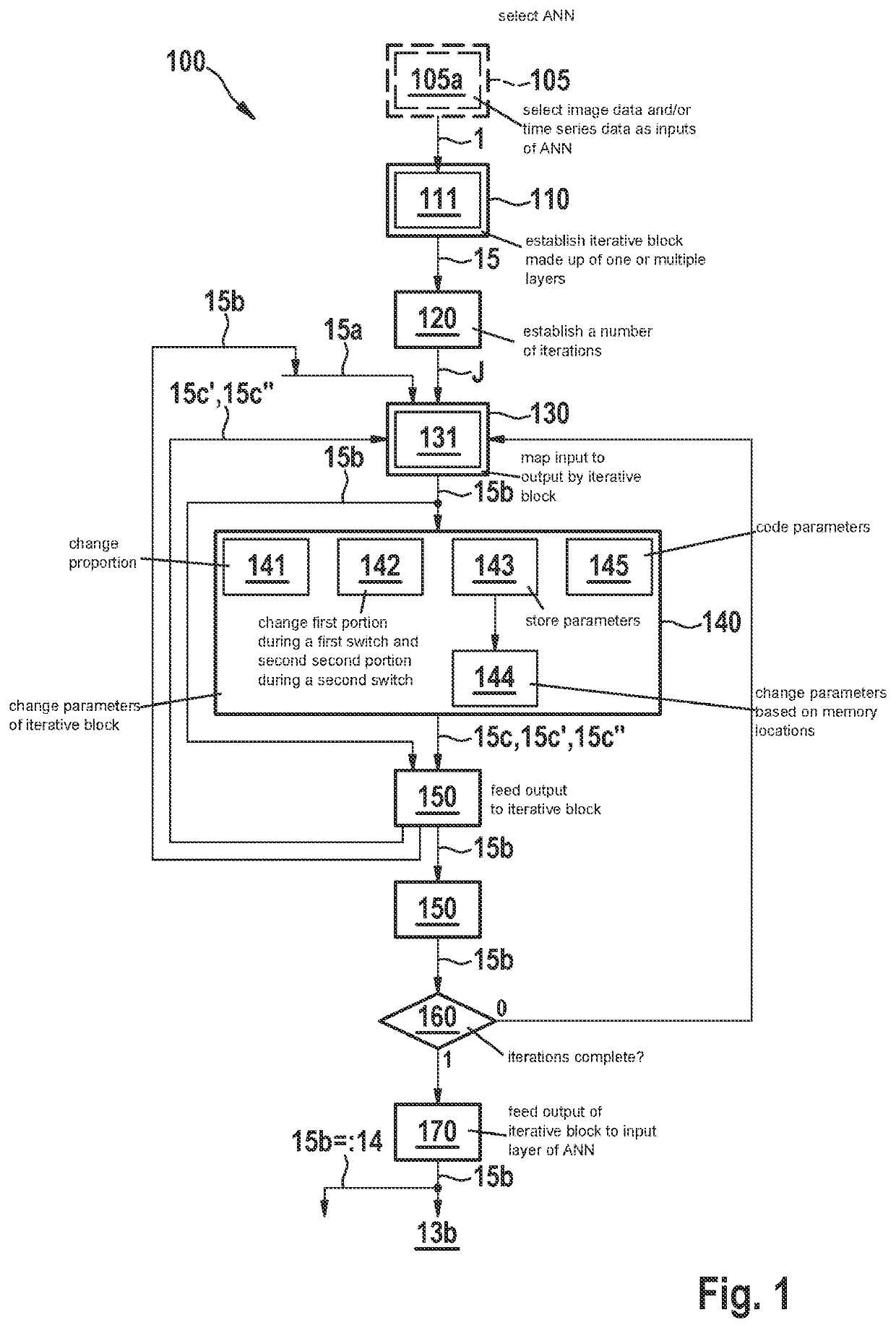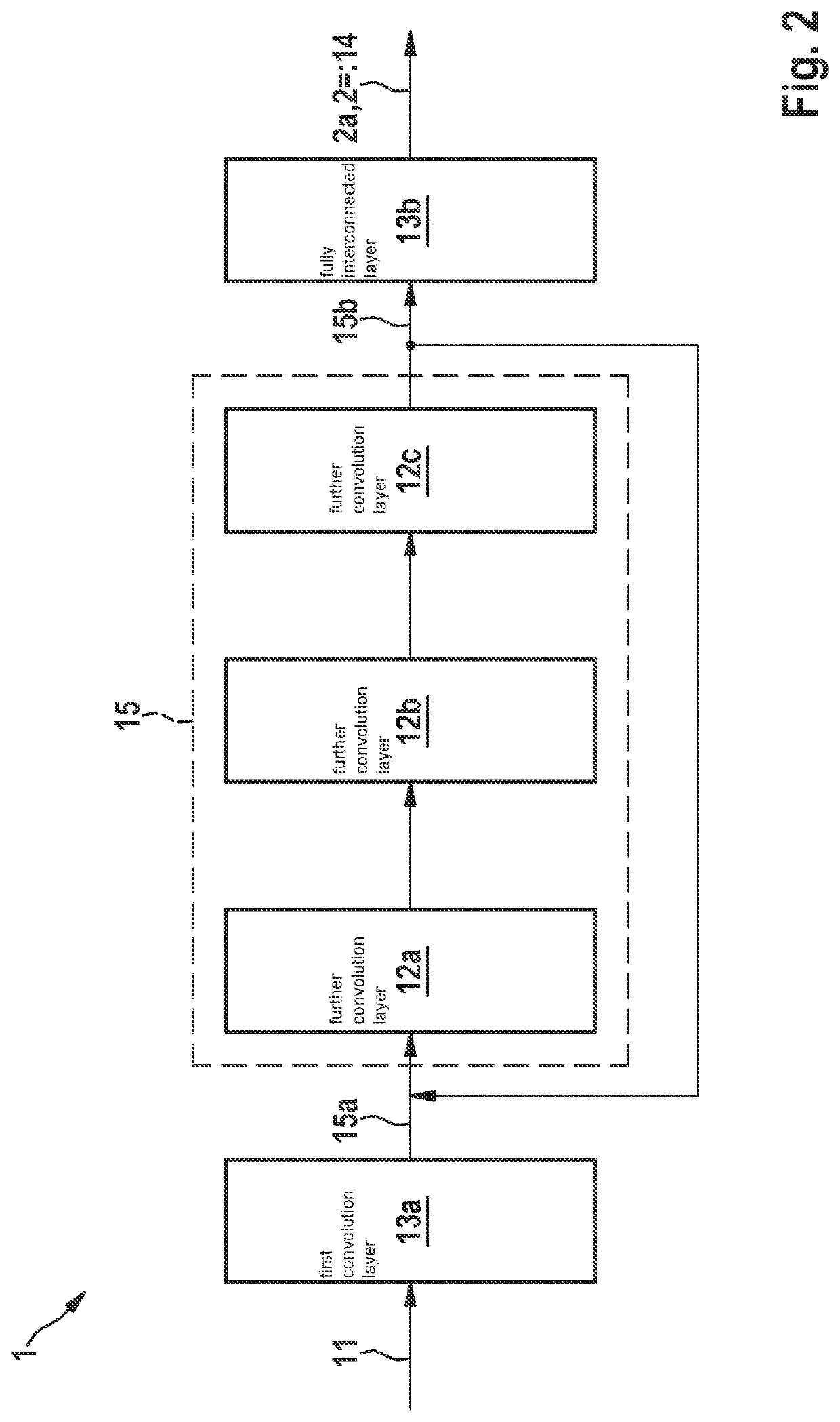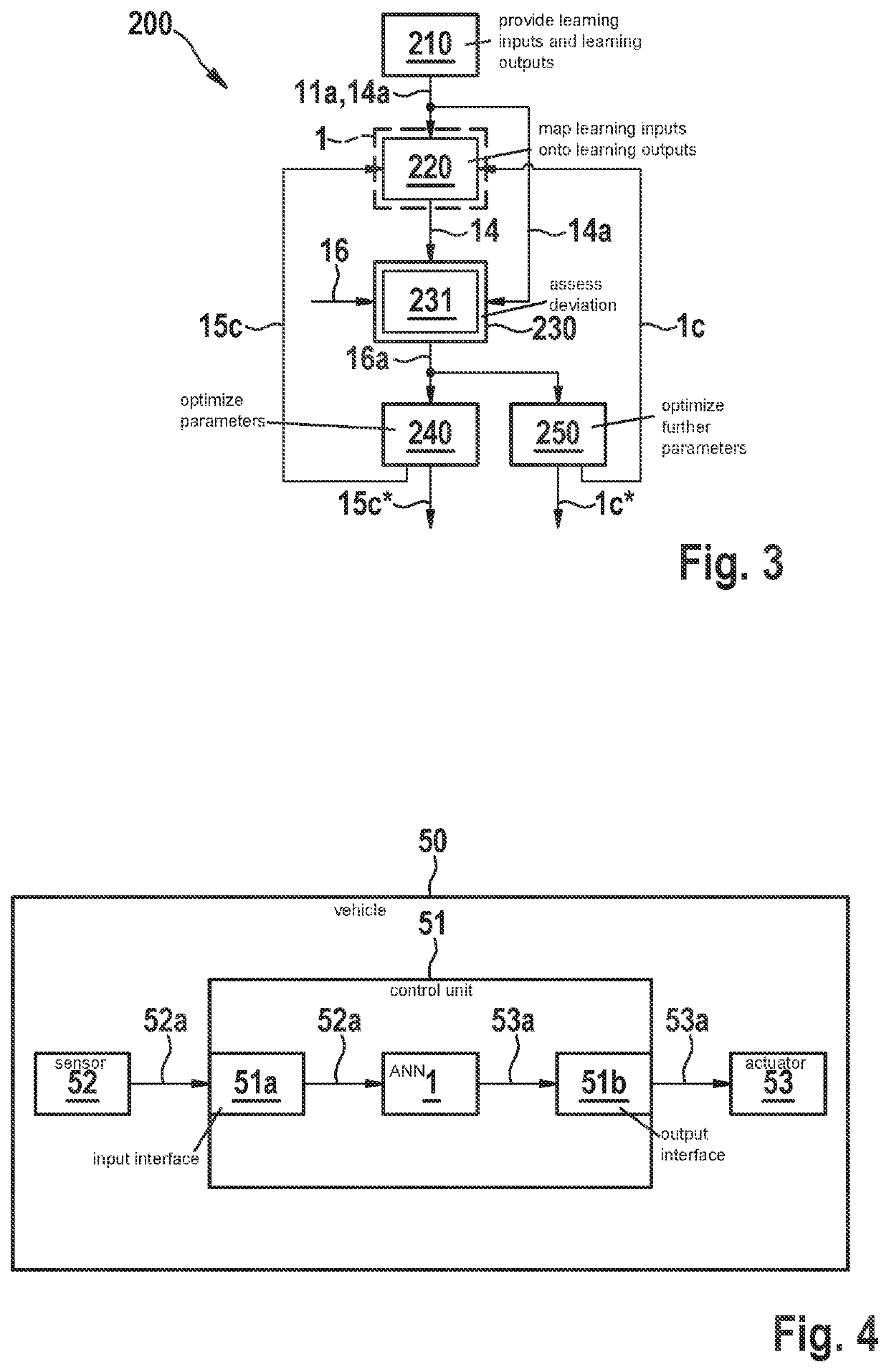More flexible iterative operation of artificial neural networks
a technology of artificial neural networks and iterative operations, applied in the field of artificial neural network operation, can solve the problems of disproportionate writing power, conflict of objectives, premature termination of iteration, etc., and achieve the effect of sacrificing flexibility and improving assessmen
- Summary
- Abstract
- Description
- Claims
- Application Information
AI Technical Summary
Benefits of technology
Problems solved by technology
Method used
Image
Examples
Embodiment Construction
[0042]FIG. 1 is a schematic flowchart of one exemplary embodiment of method 100 for operating ANN 1. ANN 1 includes a sequence of layers 12a through 12c, 13a through 13b, with which inputs 11 are processed to form outputs 14. These layers are elucidated in greater detail in FIG. 2.
[0043]In step 110, at least one iterative block 15 made up of one or multiple layers 12a through 12c, which is to be implemented multiple times, is established within ANN 1. In step 120, a number J of iterations is established, for which this iterative block 15 is to be implemented.
[0044]According to the architecture of ANN 1, iterative block 15 receives a particular input 15a. This input 15a is mapped in step 130 by iterative block 15 onto an output 15b. In this case, the behavior of iterative block 15 is characterized by parameters 15c. These parameters 15c may, for example, be weights, with which inputs, which are fed to a neuron or to another processing unit of ANN 1, are calculated to activate this ne...
PUM
 Login to View More
Login to View More Abstract
Description
Claims
Application Information
 Login to View More
Login to View More - R&D
- Intellectual Property
- Life Sciences
- Materials
- Tech Scout
- Unparalleled Data Quality
- Higher Quality Content
- 60% Fewer Hallucinations
Browse by: Latest US Patents, China's latest patents, Technical Efficacy Thesaurus, Application Domain, Technology Topic, Popular Technical Reports.
© 2025 PatSnap. All rights reserved.Legal|Privacy policy|Modern Slavery Act Transparency Statement|Sitemap|About US| Contact US: help@patsnap.com



